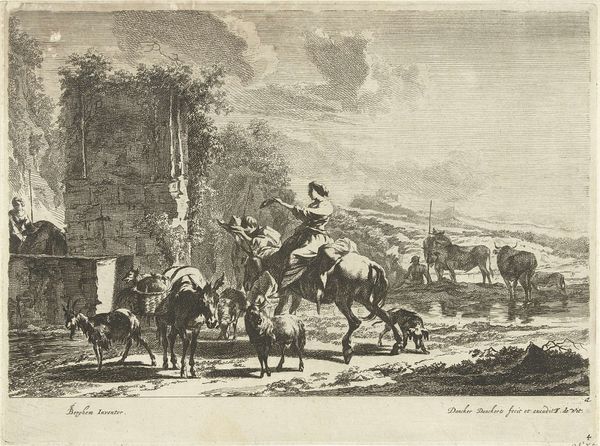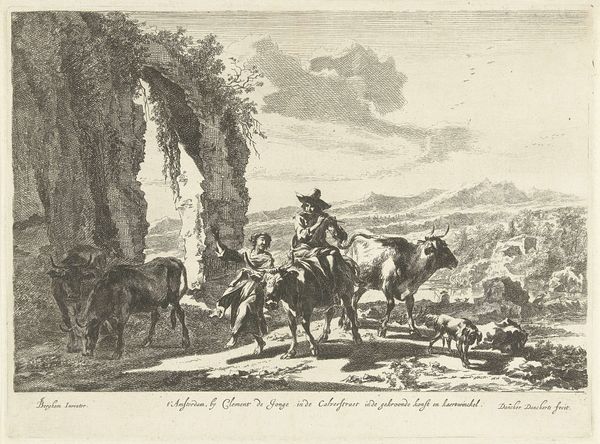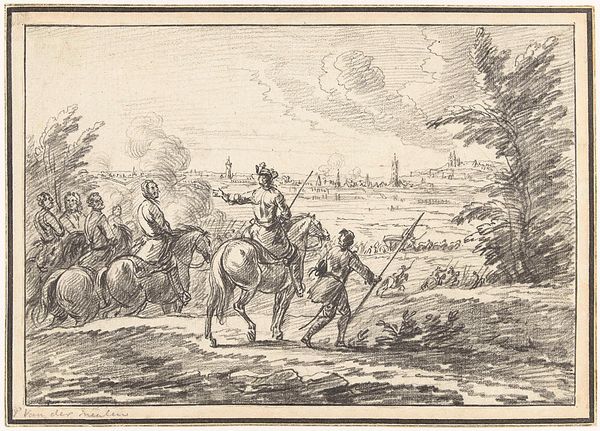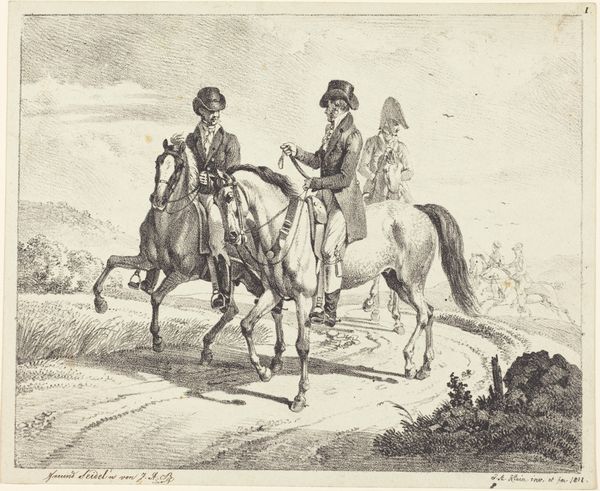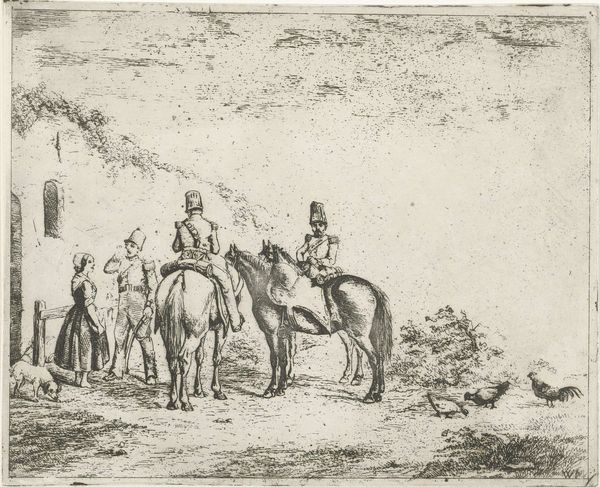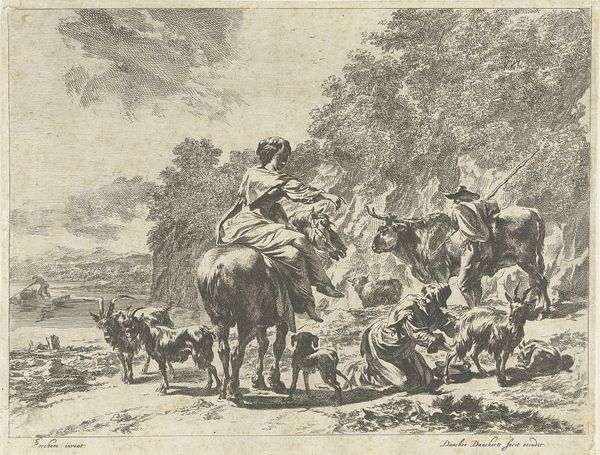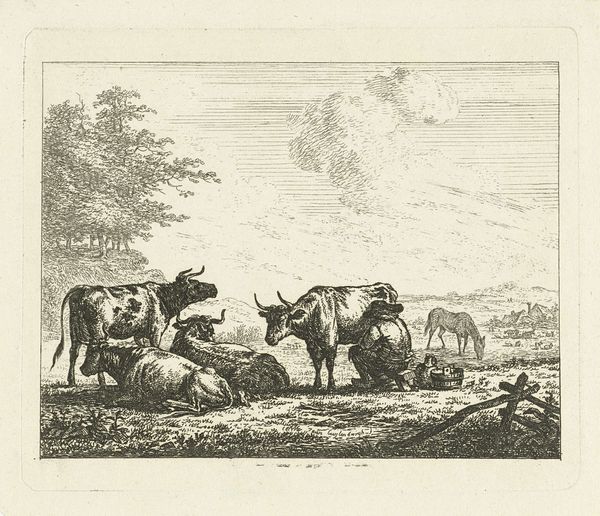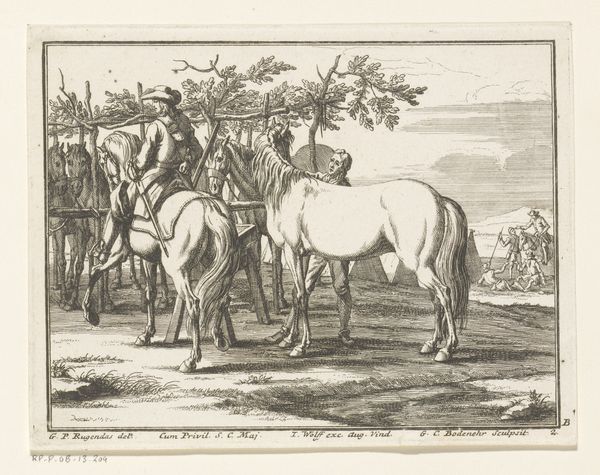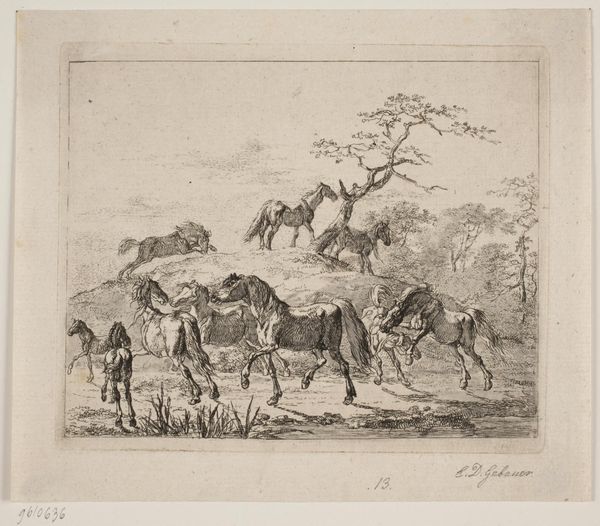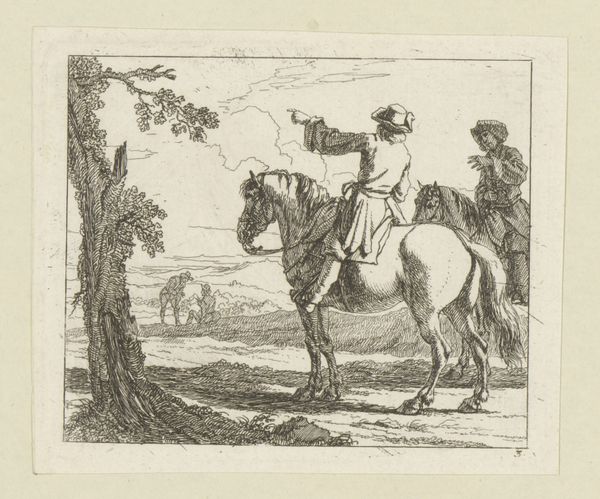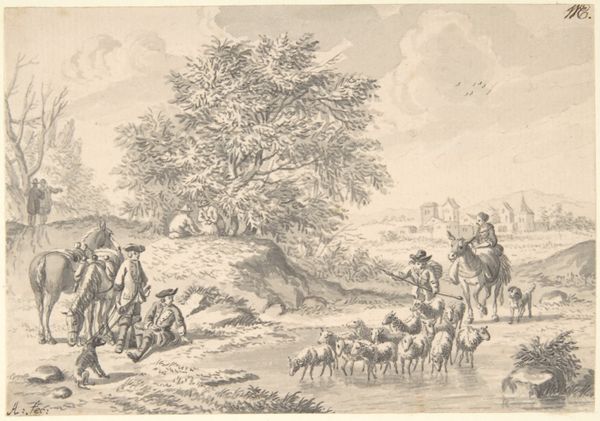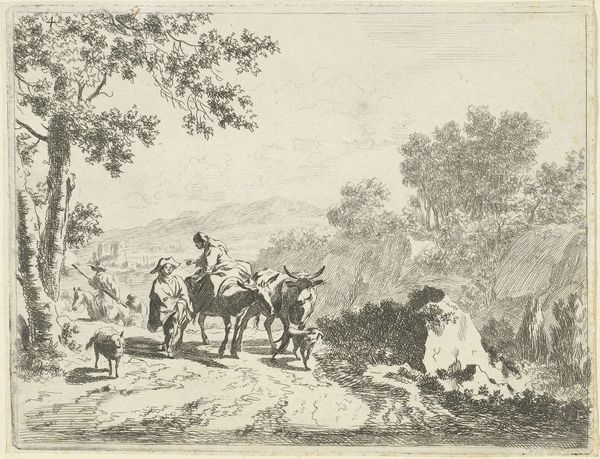
print, engraving
#
dutch-golden-age
# print
#
old engraving style
#
landscape
#
figuration
#
line
#
genre-painting
#
engraving
#
realism
Dimensions: height 218 mm, width 284 mm
Copyright: Rijks Museum: Open Domain
Editor: Here we have "Herders en vee onderweg" by Dancker Danckerts, created sometime between 1643 and 1666. It’s an engraving, and it strikes me as a really peaceful depiction of everyday life. What do you see in this piece? Curator: I see a window into the complex social fabric of the Dutch Golden Age. While seemingly bucolic, these images of rural life often masked deeper power dynamics. Consider the figure on the donkey pointing – what does that gesture signify in relation to those on foot leading the livestock? Is it a benign direction or something more authoritarian? Editor: That’s a really interesting point. I hadn’t considered that the pointing figure might represent a hierarchy. It’s so subtle, though. Curator: Exactly! The subtlety is key. The Dutch Golden Age was a period of immense wealth accumulation for some, built on the exploitation of others, both at home and abroad. The engraving’s idyllic portrayal normalizes this hierarchy. Are these herders merely guiding their livestock, or are they subject to the whims of a landowner or merchant? Editor: So, you’re saying that these genre scenes aren't just simple representations of daily life, but can be read as social commentary? Curator: Precisely. Consider who these images were created for, often the rising merchant class. By romanticizing the countryside, they reinforced their own social position and justified the existing power structures. What isn't shown is just as important as what is. Where is the impact of the rapidly changing economic system? Editor: I never thought about art this way. It’s really powerful to consider art as an active participant in shaping social norms, and making what might be considered wrong seem normal. Curator: It's a lens for understanding the past, and, perhaps, reflecting on our present. By critically examining seemingly simple images, we can unearth the intricate web of social, political, and economic forces that shaped their creation and reception.
Comments
No comments
Be the first to comment and join the conversation on the ultimate creative platform.
